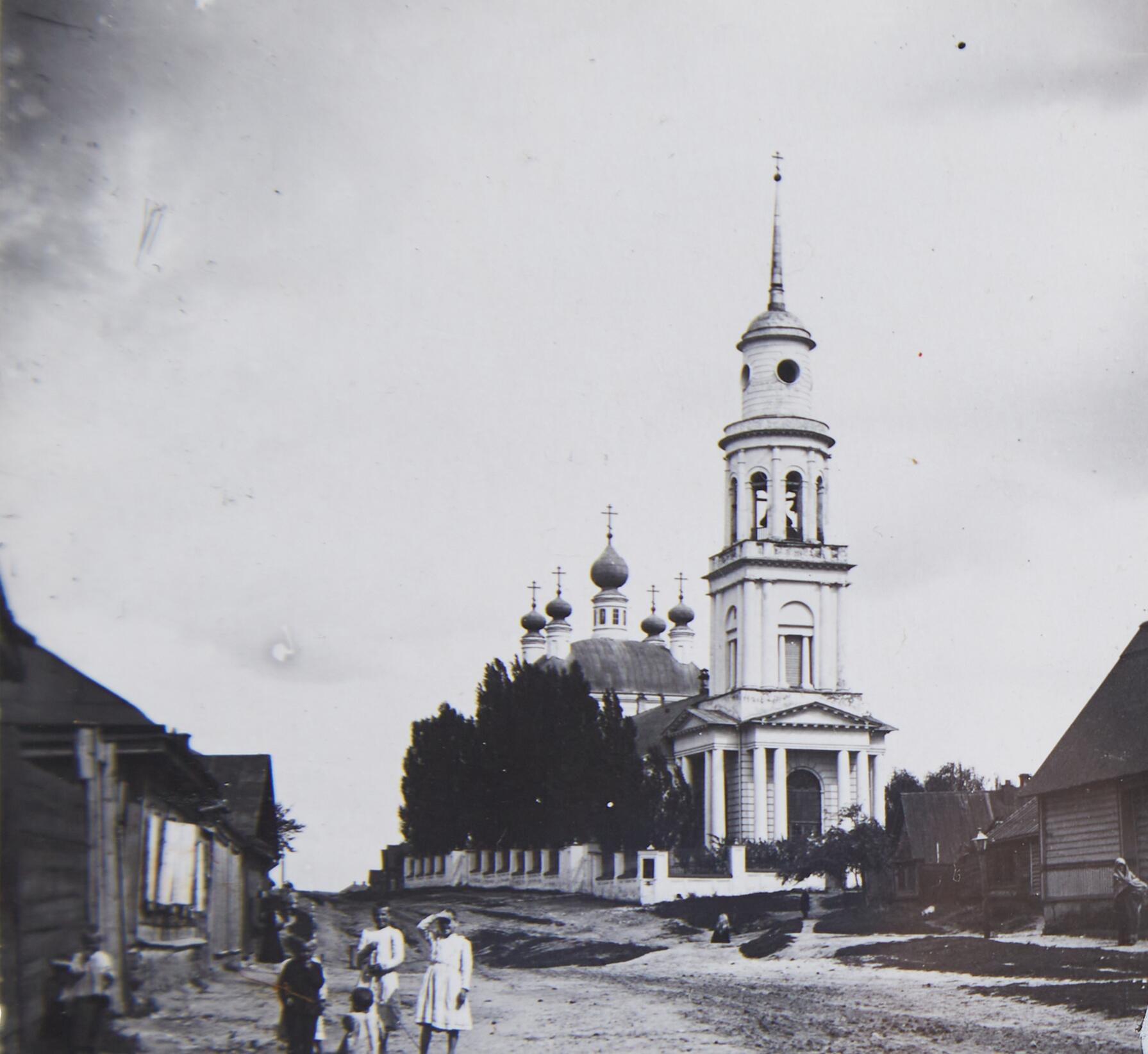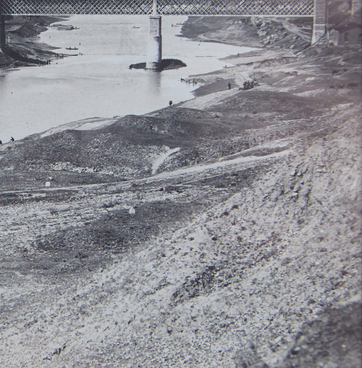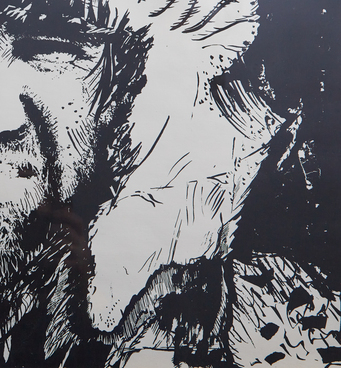The collection of the Rusanov House Museum includes a postcard featuring the Akhtyrsky Lane in Oryol.
Legend has it that in the 16th century, the Pyatnitskaya Church was located on the site of the cathedral, so the adjacent area was named Pyatnitskaya Sloboda. By the late 18th century, the church was significantly dilapidated, it had to be dismantled, and the question of building a new church arose. The construction was carried out under the following circumstances. In 1773, the Oryol merchant Konstantin Semyonovich Pastukhov, who had a horse trading business in the city of Akhtyrka (Kharkov governorate), was healed after a long illness through the prayer in front of the miracle-working Akhtyrka Icon of the Mother of God, famous at that time for numerous miracles and venerated throughout Russia. A majestic stone cathedral was built for the icon in Akhtyrka. Having returned to Oryol, Pastukhov addressed the diocesan authorities and asked for a blessing to build a stone church in honor of the Akhtyrka Icon of the Mother of God on the Pyatnitsky churchyard. The permission was granted, and the construction began in the same year. In 1775 the church was built and consecrated.
Soon it could no longer accommodate all the parishioners. In 1786, the church building was expanded and another chapel was built in honor of the Holy Great Martyr Nikita. The city had grown by this time, the Akhtyrka church with an adjacent cemetery was within the city, so the cemetery was closed, and the church became a parish one. In 1803, construction work was again carried out in the church: the vaults of the main altar were raised, and a new chapel was built and consecrated in honor of the Kazan Icon of the Mother of God. In 1823 a high four-tiered bell tower was built. Initially, it stood separately from the church, but in 1870, according to the project of the architect Ivan Petrovich Lutokhin, the refectory was lengthened and connected to the bell tower. That design of the church can still be seen today.
After the Bolshevik revolution, during the period of the “seizure of valuables”, many icons and a large silver cross were confiscated. The cross was an early piece of religious worship, with almost 500 years of history. On February 3, 1938, the Akhtyrka Church was closed according to the decision of the All-Russian Central Executive Committee of the Oryol Region and used as a granary. On March 15, 1942, during the Nazis occupation of Oryol, the church was reopened and has not been closed since.
The most revered shrines of the church are the
miracle-working Akhtyrka Icon of the Mother of God, as well as icons with
particles of holy relics and the palm of St. Tikhon.


